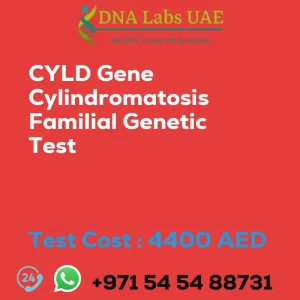KDR Gene Hemangioma Capillary Infantile Familial Susceptibility to Genetic Test
Test Name: KDR Gene Hemangioma Capillary Infantile Familial Susceptibility to Genetic Test
Components: Blood or Extracted DNA or One drop Blood on FTA Card
Price: 4400.0 AED
Report Delivery: 3 to 4 Weeks
Method: NGS Technology
Test Type: Cancer
Doctor: Oncologist
Test Department: Genetics
Pre Test Information: Clinical History of Patient who is going for KDR Gene Hemangioma, capillary infantile, familial, susceptibility to NGS Genetic DNA Test. A Genetic Counselling session to draw a pedigree chart of family members affected with KDR Gene Hemangioma, capillary infantile, familial, susceptibility to NGS Genetic DNA Test gene KDR
Test Details
The KDR gene, also known as the kinase insert domain receptor gene, is associated with a condition called infantile hemangioma. Hemangiomas are benign tumors that develop in infancy, typically appearing as a red, raised birthmark on the skin. The capillary infantile hemangioma is a specific type of hemangioma that affects the capillaries.
Familial infantile hemangioma refers to cases where there is a genetic predisposition for the development of hemangiomas within a family. In these cases, there may be a higher likelihood of multiple family members being affected by the condition.
Susceptibility to NGS genetic testing refers to the potential for using Next-Generation Sequencing (NGS) technology to identify genetic variations or mutations that may contribute to the development of infantile hemangioma. NGS allows for the simultaneous analysis of multiple genes, providing a comprehensive evaluation of an individual’s genetic makeup.
Therefore, the “KDR Gene Hemangioma, capillary infantile, familial, susceptibility to NGS Genetic Test” refers to a genetic test that aims to identify genetic variations in the KDR gene and other relevant genes associated with capillary infantile hemangioma, particularly in families with a history of the condition. This test can help in understanding the genetic basis of the disease and potentially aid in diagnosis, prognosis, and personalized treatment options.
| Test Name | KDR Gene Hemangioma capillary infantile familial susceptibility to Genetic Test |
|---|---|
| Components | |
| Price | 4400.0 AED |
| Sample Condition | Blood or Extracted DNA or One drop Blood on FTA Card |
| Report Delivery | 3 to 4 Weeks |
| Method | NGS Technology |
| Test type | Cancer |
| Doctor | Oncologist |
| Test Department: | Genetics |
| Pre Test Information | Clinical History of Patient who is going for KDR Gene Hemangioma, capillary infantile, familial, susceptibility to NGS Genetic DNA Test. A Genetic Counselling session to draw a pedigree chart of family members affected with KDR Gene Hemangioma, capillary infantile, familial, susceptibility to NGS Genetic DNA Test gene KDR |
| Test Details |
The KDR gene, also known as the kinase insert domain receptor gene, is associated with a condition called infantile hemangioma. Hemangiomas are benign tumors that develop in infancy, typically appearing as a red, raised birthmark on the skin. The capillary infantile hemangioma is a specific type of hemangioma that affects the capillaries. Familial infantile hemangioma refers to cases where there is a genetic predisposition for the development of hemangiomas within a family. In these cases, there may be a higher likelihood of multiple family members being affected by the condition. Susceptibility to NGS genetic testing refers to the potential for using Next-Generation Sequencing (NGS) technology to identify genetic variations or mutations that may contribute to the development of infantile hemangioma. NGS allows for the simultaneous analysis of multiple genes, providing a comprehensive evaluation of an individual’s genetic makeup. Therefore, the “KDR Gene Hemangioma, capillary infantile, familial, susceptibility to NGS Genetic Test” refers to a genetic test that aims to identify genetic variations in the KDR gene and other relevant genes associated with capillary infantile hemangioma, particularly in families with a history of the condition. This test can help in understanding the genetic basis of the disease and potentially aid in diagnosis, prognosis, and personalized treatment options. |








